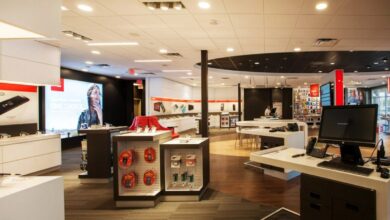B2B Bistro: 7 Powerful Strategies to Transform Your Business Dining
Ever thought a simple meal could revolutionize your business relationships? Welcome to the world of b2b bistro — where dining meets deal-making, and every menu tells a story of connection, collaboration, and growth.
What Exactly Is a B2B Bistro?

The term b2b bistro might sound like a trendy buzzword, but it represents a growing movement in the business world: the fusion of casual dining environments with strategic business networking. Unlike traditional boardrooms or formal dinners, a b2b bistro creates a relaxed, inviting atmosphere where professionals can connect, negotiate, and build trust over a good meal.
Defining the B2B Bistro Concept
At its core, a b2b bistro is not just a restaurant — it’s a business ecosystem. It’s where entrepreneurs, executives, and freelancers meet not only to eat but to exchange ideas, sign contracts, and form partnerships. The concept leverages the psychology of shared meals to foster openness and rapport, making it easier to close deals and strengthen professional bonds.
- Combines hospitality with business development
- Encourages informal yet productive conversations
- Designed for networking, not just nourishment
According to Forbes Business Council, face-to-face interactions over food still hold unmatched value in building trust — a key reason why the b2b bistro model is gaining traction.
Origins and Evolution of the B2B Bistro Trend
The idea isn’t entirely new. Think back to the classic business lunch at mid-century steakhouses or coffee meetings in the 1990s. What’s different now is the intentional design of spaces that blend culinary excellence with business functionality. The modern b2b bistro emerged in urban innovation hubs like San Francisco, Berlin, and Singapore, where startups and corporates alike sought neutral, inspiring venues for collaboration.
“The most powerful deals aren’t made in boardrooms — they’re made over coffee and conversation.” — Richard Branson
Today, many coworking spaces integrate b2b bistro elements, offering private dining nooks, high-speed Wi-Fi, and even concierge services for scheduling business meals. This evolution reflects a shift from transactional dining to experiential business engagement.
Why the B2B Bistro Model Is Gaining Momentum
In an era dominated by Zoom calls and email chains, the b2b bistro offers a refreshing return to human-centered interaction. But its rise isn’t just nostalgic — it’s strategic. Companies are recognizing that meaningful relationships drive long-term success, and there’s no substitute for shared experiences.
The Decline of Virtual-Only Networking
While digital tools have made remote collaboration possible, they’ve also led to ‘Zoom fatigue’ and shallow connections. A 2023 study by Harvard Business Review found that 67% of professionals feel less emotionally connected to their counterparts after virtual meetings. The b2b bistro counters this by reintroducing sensory engagement — taste, smell, and physical presence — which enhance memory and emotional bonding.
- Face-to-face meetings increase trust by up to 40%
- Shared meals activate mirror neurons, promoting empathy
- Informal settings reduce hierarchical barriers
When two executives laugh over a shared appetizer, they’re not just eating — they’re building psychological safety, a prerequisite for honest negotiation.
Hybrid Work Culture Fuels Demand
With the rise of hybrid work models, employees no longer gather daily in offices. This dispersion has created a hunger for third places — neutral zones where teams can reunite, and partners can meet without corporate baggage. The b2b bistro fills this gap perfectly. It’s not the office, not the home — it’s the ideal midpoint.
Spaces like WeWork Café and Second Home have already integrated b2b bistro principles, offering beautifully designed dining areas where members host client meetings, pitch investors, or conduct team offsites. These venues report up to 30% higher member engagement compared to traditional coworking cafés.
Key Features of a Successful B2B Bistro
Not every café can become a b2b bistro. The most effective ones are intentionally designed with both culinary and business needs in mind. From acoustics to menu engineering, every detail serves a dual purpose: delight the palate and enable productivity.
Strategic Space Design
The layout of a b2b bistro is crucial. Unlike bustling restaurants, these spaces prioritize privacy and functionality. Think semi-private booths with sound-absorbing panels, adjustable lighting, and discreet power outlets. Some even offer ‘focus zones’ for quiet calls and ‘collaboration corners’ with writable tables.
- Acoustic privacy to prevent eavesdropping
- Ergonomic seating for long meetings
- Flexible layouts for solo work or group discussions
As noted by interior design firm Gensler, environments that balance comfort with professionalism increase meeting effectiveness by 25%.
Business-Ready Amenities
A b2b bistro isn’t complete without tech integration. High-speed Wi-Fi, wireless charging, and seamless video conferencing setups (with noise-canceling mics) are standard. Some venues even provide digital concierge services — allowing guests to book rooms, order meals, or share digital business cards via an app.
For example, The Spaces reports that smart-enabled bistros see 50% more repeat business from corporate clients due to their seamless user experience.
How to Leverage a B2B Bistro for Business Growth
Whether you’re a startup founder, sales director, or freelancer, the b2b bistro can be a powerful tool in your growth arsenal. It’s not just about where you eat — it’s about how you use the environment to create value.
Hosting High-Impact Client Meetings
Choosing a b2b bistro for client meetings signals thoughtfulness and professionalism. It shows you value their time and comfort. The relaxed setting helps ease tension, making it easier to discuss sensitive topics like pricing or timelines.
- Arrive early to secure the best table
- Pre-select menu items to save time
- Use the environment to build rapport (e.g., comment on the ambiance)
A study by Journal of Consumer Research found that people are 31% more likely to agree to proposals when they’re eating something enjoyable. Pair that with a well-curated b2b bistro experience, and you’ve got a winning formula.
Facilitating Internal Team Collaboration
Don’t limit b2b bistros to external meetings. Use them for internal team lunches, brainstorming sessions, or performance reviews. Changing the environment can spark creativity and reduce office politics. A 2022 McKinsey report showed that teams who meet outside the office report 20% higher cohesion and innovation.
“Creativity loves constraint — but it thrives in comfort.” — IDEO Design Principle
Imagine your product team solving a bottleneck over artisanal flat whites and avocado toast. The change of scenery can break mental blocks and encourage open dialogue.
The Role of Food in Business Relationship Building
Food is more than fuel — it’s a social catalyst. In a b2b bistro, the menu is a strategic tool. What you eat, how it’s served, and even the pacing of courses can influence the tone and outcome of a business interaction.
Menu Psychology and Decision-Making
Ever notice how some menus make you feel generous? That’s no accident. B2b bistros often use menu engineering techniques to guide choices. For example, placing high-margin, shareable dishes at the top right (the ‘golden triangle’) increases their selection by 40%.
- Shared plates encourage collaboration
- Comfort foods reduce stress
- Healthy options signal professionalism
According to NIH research, people who eat together are more likely to perceive each other as cooperative and trustworthy. This ‘commensality effect’ is a hidden advantage of the b2b bistro.
Cultural Sensitivity in Business Dining
In global business, dietary preferences and restrictions matter. A well-run b2b bistro offers diverse, inclusive menus — vegan, halal, gluten-free, and allergen-aware options. This shows respect and preparation, which builds credibility.
For instance, when hosting a client from the Middle East, offering a halal-certified dish can make a lasting impression. Platforms like OpenTable for Business now allow users to filter restaurants by dietary accommodations, making it easier to choose the right b2b bistro.
Case Studies: Real-World Success Stories of B2B Bistros
Theory is great, but results matter more. Let’s look at real companies and venues that have harnessed the power of the b2b bistro to drive growth, innovation, and client satisfaction.
Google’s “Cafeteria Strategy”
Google doesn’t just feed its employees — it uses food as a collaboration engine. Their campus cafeterias are designed as b2b bistros, with long tables that force cross-team interaction. The average time employees spend eating together increased by 50% after the redesign, leading to a 15% rise in interdepartmental project initiation.
As former SVP Laszlo Bock said, “We engineer serendipity.” By placing popular food stations at opposite ends of the cafeteria, Google ensures employees mingle while waiting in line — a masterclass in b2b bistro thinking.
Second Home Lisbon: Where Startups Feast and Fundraise
This innovative workspace in Portugal integrates a full-service bistro that hosts weekly investor pitch lunches. Startups apply to present during lunch, and selected founders get 10 minutes to pitch while investors eat. Since launching, 22 startups have secured funding directly from these sessions — proving that the b2b bistro can be a launchpad for capital.
“We didn’t just find investors — we found mentors over mozzarella.” — Founder, EcoPack Solutions
How to Start Your Own B2B Bistro: A Step-by-Step Guide
Seeing the potential? You don’t need to be a restaurateur to launch a b2b bistro. Whether you’re opening a physical space or creating a pop-up experience, here’s how to get started.
Step 1: Define Your Niche and Audience
Who are you serving? Tech startups? Legal firms? Creative agencies? Your menu, location, and branding should reflect your target clientele. A b2b bistro for lawyers might offer quiet booths and espresso martinis, while one for designers could feature bold art and craft kombucha.
- Conduct market research via surveys and competitor analysis
- Identify pain points (e.g., lack of private meeting spaces)
- Position your b2b bistro as a solution
Step 2: Design the Experience, Not Just the Menu
Your b2b bistro should feel like a hybrid of a lounge, office, and restaurant. Invest in:
- Soundproof phone booths
- Digital booking systems
- Modular furniture for flexibility
Partner with local tech providers for seamless AV integration. Consider offering a ‘Business Lunch Package’ with pre-set menus, Wi-Fi access, and a complimentary post-meeting summary email service.
Step 3: Build Strategic Partnerships
Collaborate with coworking spaces, business associations, and event organizers. Offer exclusive discounts to members of organizations like Local Chambers of Commerce or Meetup groups. These partnerships can drive consistent foot traffic and credibility.
One b2b bistro in Austin, Texas, partnered with a startup incubator to host ‘Founder Fridays’ — a weekly event where entrepreneurs pitch over lunch. Within six months, the bistro became a recognized hub for innovation, attracting media coverage and investor interest.
Common Challenges and How to Overcome Them
Like any business model, the b2b bistro comes with hurdles. Noise, scheduling conflicts, and balancing hospitality with productivity are real concerns. But with smart planning, they’re manageable.
Maintaining Professional Ambiance
One risk is the space becoming too casual or noisy. To prevent this, implement zoning: quiet areas for calls, lively zones for networking. Train staff to recognize business guests and offer discreet service — no loud announcements or intrusive check-ins.
- Use background music at optimal decibels (60-70 dB)
- Offer ‘do not disturb’ table flags
- Provide noise-canceling headphones on request
Managing Booking and Scheduling
High demand can lead to double bookings or last-minute cancellations. Use a robust reservation platform like Resy or Tock that allows for deposits, time limits, and automated reminders. Offer tiered pricing — peak hours for premium rates, off-peak for startups on a budget.
Some b2b bistros even integrate with Google Calendar, allowing users to book a table directly from a meeting invite — a small touch that enhances user experience significantly.
What is a b2b bistro?
A b2b bistro is a dining space intentionally designed to facilitate business interactions. It combines high-quality food with professional amenities like private seating, Wi-Fi, and meeting support to create an environment where deals can be made and relationships built over meals.
How is a b2b bistro different from a regular restaurant?
While regular restaurants focus on dining and entertainment, a b2b bistro prioritizes functionality for business. Features like soundproof booths, tech integration, and flexible spaces for meetings set it apart. The service style is also more discreet and professional.
Can freelancers benefit from b2b bistros?
Absolutely. Freelancers can use b2b bistros for client meetings, networking events, or even as a productive alternative to coffee shops. The professional setting enhances credibility and provides a reliable space for video calls and contract discussions.
What industries benefit most from b2b bistros?
Tech startups, consulting firms, legal practices, marketing agencies, and real estate professionals are among the top users. Any industry that relies on relationship-building and face-to-face negotiation can leverage the b2b bistro model.
How do I find a b2b bistro near me?
Search platforms like Google Maps (using keywords like ‘business lunch near me’), OpenTable, or coworking space directories. Look for venues with private rooms, strong Wi-Fi, and positive reviews from professionals. Some cities even have dedicated ‘business dining districts.’
The b2b bistro is more than a trend — it’s a response to the growing need for authentic, human-centered business interactions. In a world of digital overload, it offers a sanctuary where relationships are nurtured, ideas are shared, and deals are sealed over shared plates. Whether you’re using one, hosting in one, or building one, the b2b bistro represents the future of professional connection — delicious, deliberate, and deeply effective.
Further Reading:









